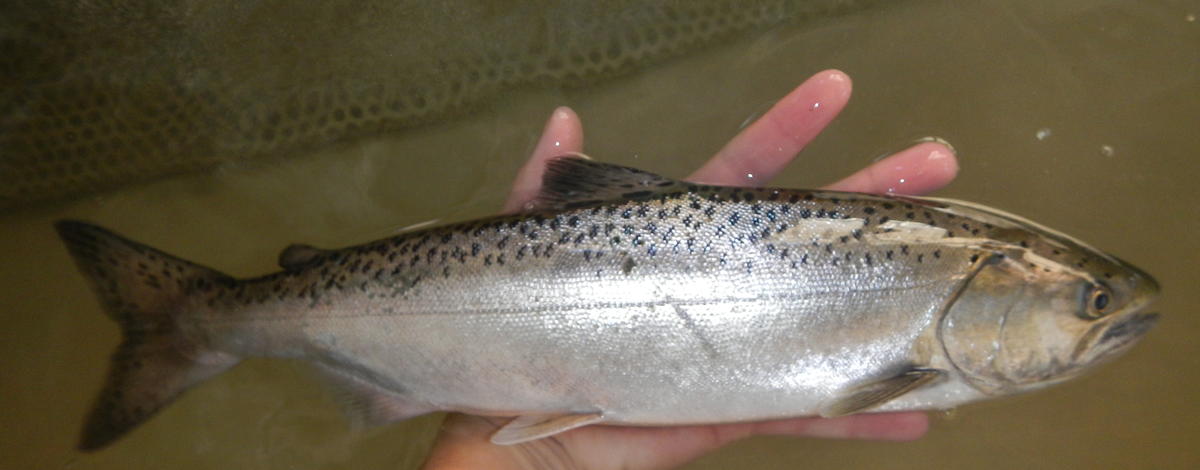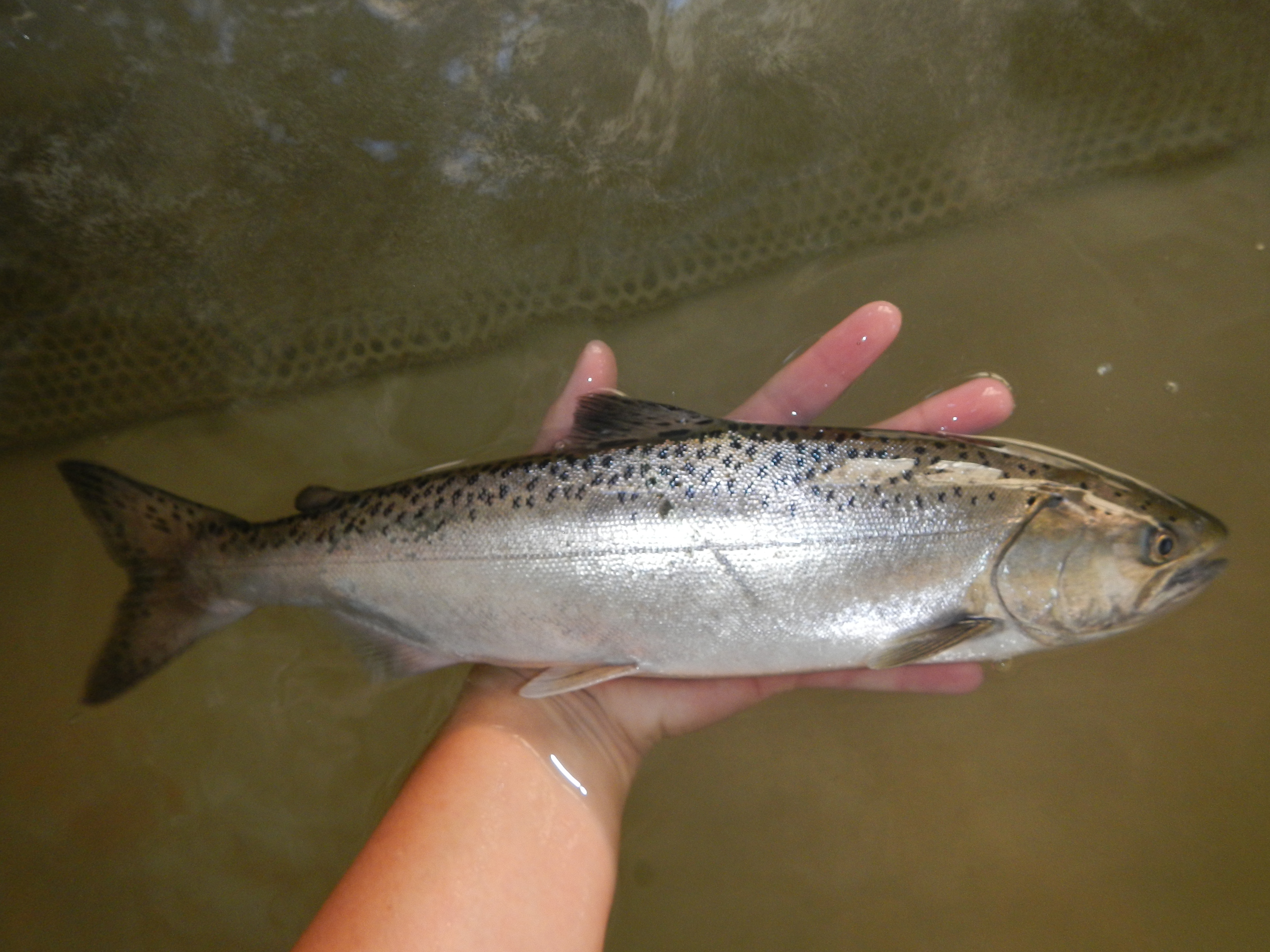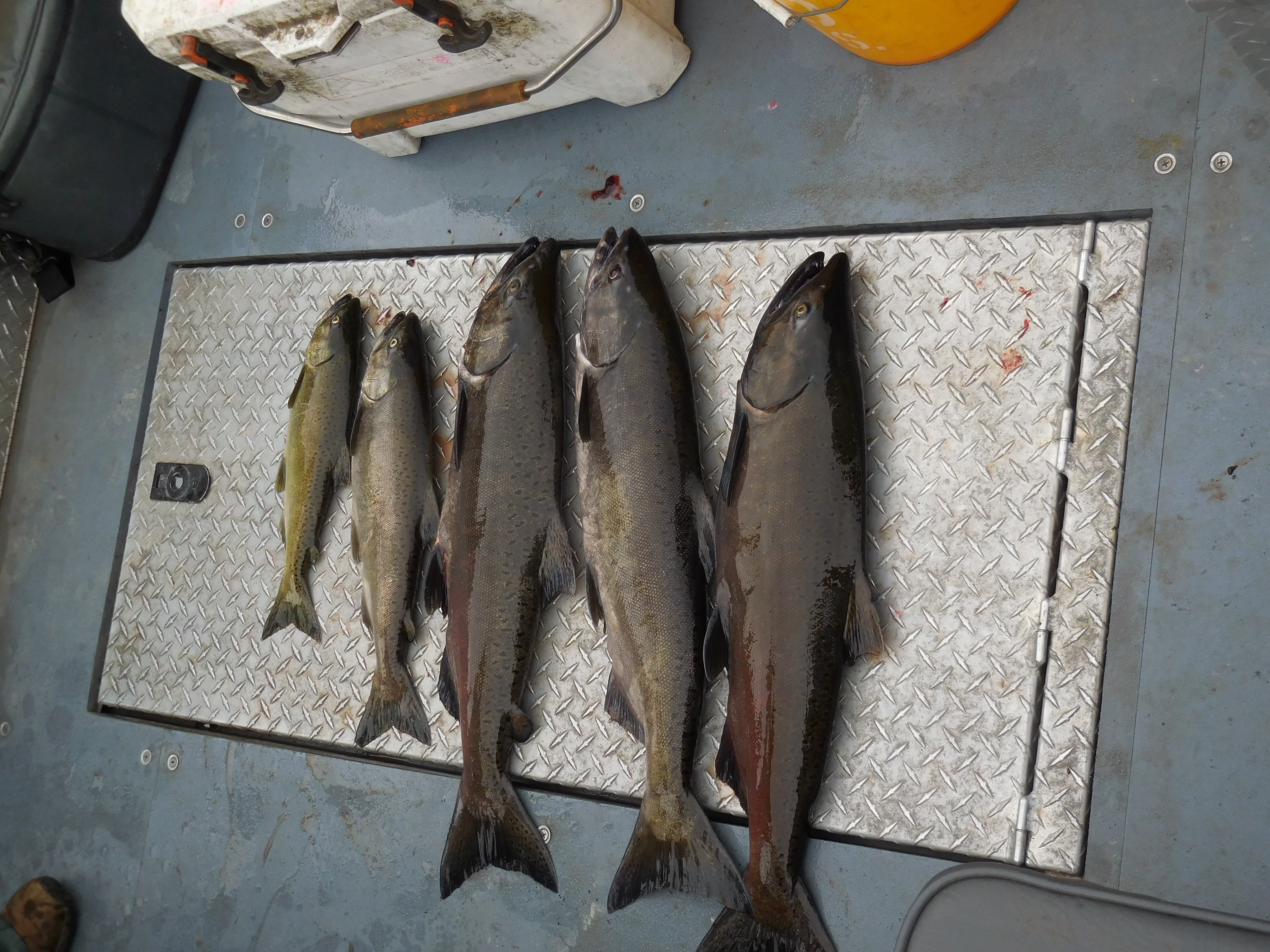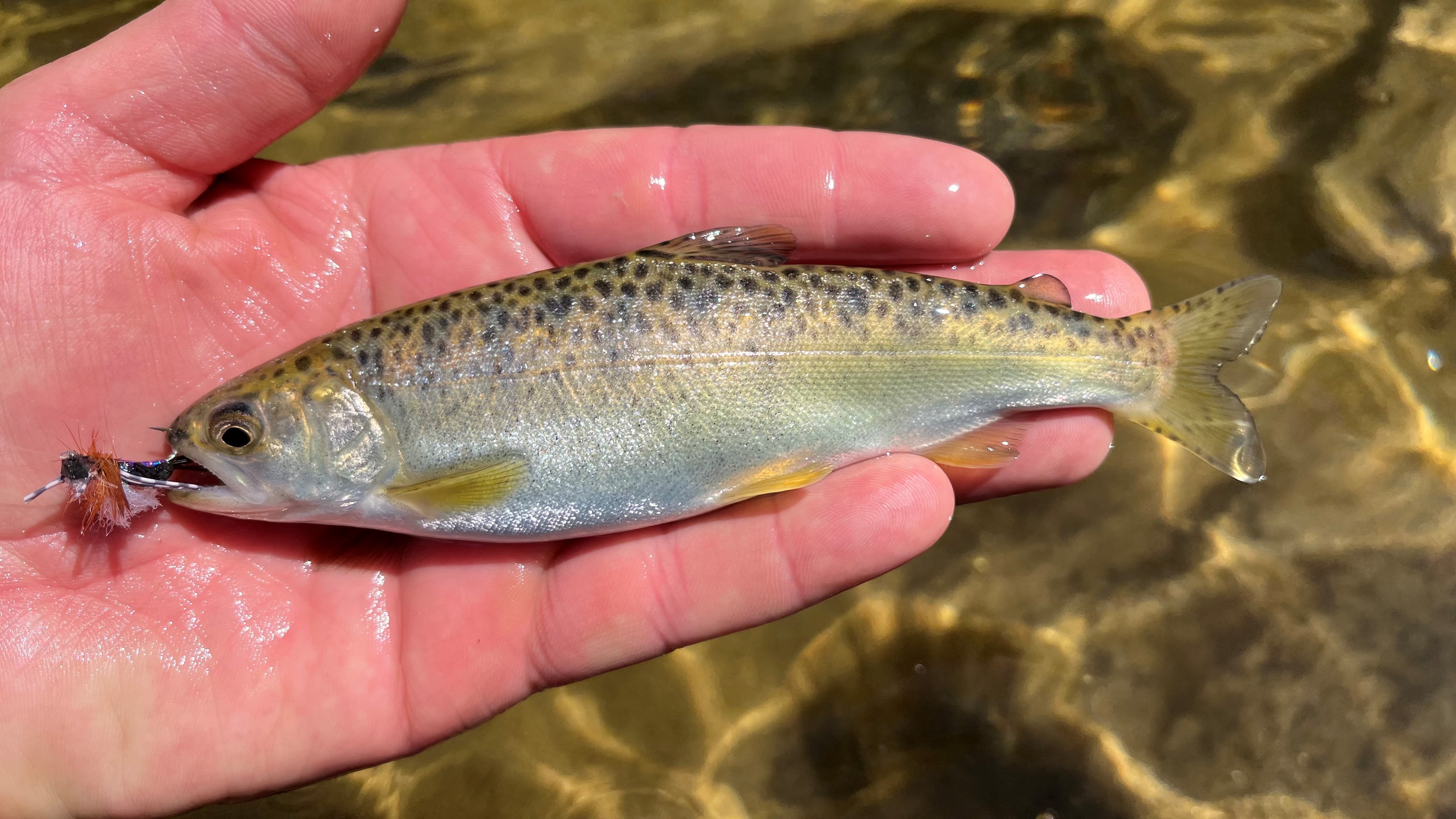Fish biologists define a jack as a male salmon that matures at an age younger than the youngest mature female. Because they are younger, they are also smaller. Jacks are only found in some salmon species- Chinook, coho, and rarely, sockeye. In these species, almost all females spend at least two winters at sea before returning to spawn. So, a jack is a male salmon that spends only one winter in the ocean, which is why it is smaller (less time spent growing in the ocean). Very few females spend only one winter at sea. These are called ‘jills’ and we only see a handful a year in Idaho.
Why are jacks considered differently from the older, larger salmon? Well, we often want to protect females because they lay the eggs, and the number of eggs spawned sets the maximum number of offspring. That is important to how quickly a wild population can grow and to how many young salmon a hatchery can release. A single male can fertilize eggs from many females, so males are less important for maintaining salmon populations. Also, larger fish are more desirable to anglers. In Idaho regulations, jacks are fish less than 24 inches for Chinook salmon and less than 20 inches for coho salmon. These regulations define the maximum expected length of a jack. On average, Chinook salmon jacks are about 20 inches long.
In the wild, jacks are at a disadvantage during spawning when competing with larger males. Or are they? Larger males will chase off competitors when courting females but may overlook smaller rivals if there are competitors closer to their own size. In these cases, a jack will lurk around the edges until the female starts to spawn her eggs. Then they streak in to release a cloud of milt in hopes of fertilizing some eggs. Scientists call this strategy ‘sneaking’. Most people call it something else. Every year we see jacks during spawning surveys, so it is evident that they can be successful. In fact, the life cycle of jacks has probably evolved to make salmon populations more resilient. The younger jacks mix their genes across the generations of fish returning from the ocean. That genetic diversity helps keep salmon populations strong against extinction and natural disasters.
If you see salmon spawning and watch carefully, you might see even smaller fish sneaking in. There are minijacks- an even younger, smaller version of a jack! Minijacks only spend a few months at sea before coming back upriver, which is why they are smaller than a true jack salmon. There are also mature parr, which are small barred males that never migrated from their home stream. These are only a few inches long. I’ve heard the term micro-jack used for these fish but parr that never leave their home stream look very different from salmon that made it to saltwater, even if only for a few months. If you don’t know that, then you don’t know jack!




